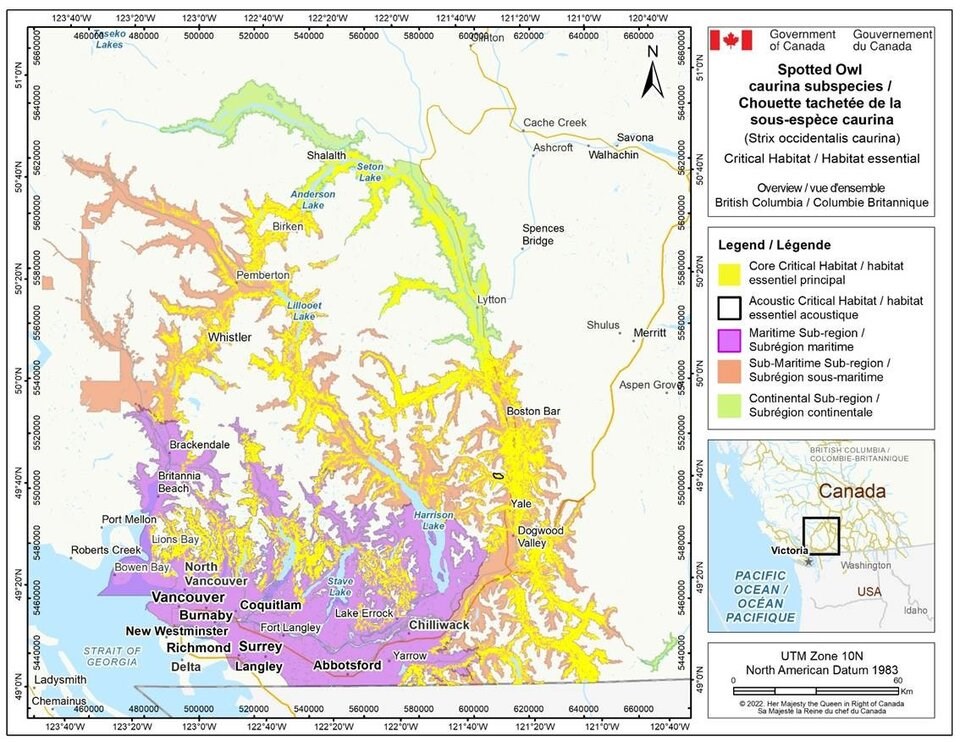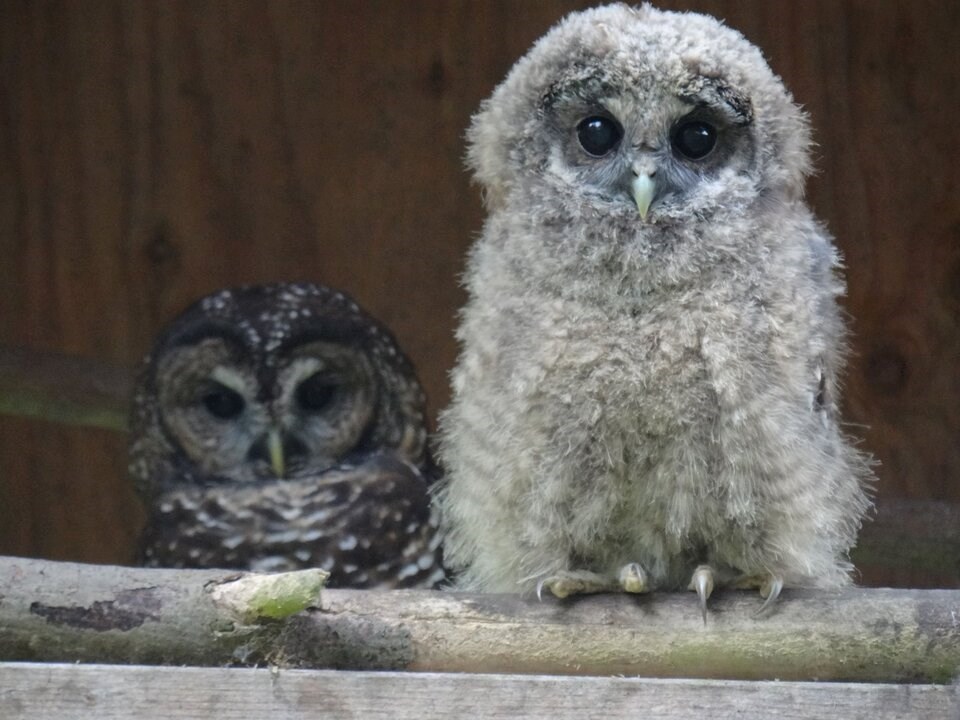Environmental groups are hailing a new draft plan that aims to repopulate and protect endangered northern spotted owl as “excellent” after the federal government doubled the amount of land designated as critical habitat.
A 2023 version of the plan had set aside more than 200,000 hectares as “potential” critical habitat.
Meanwhile, the other 200,000 hectares of land that maintained the critical habitat designation included a lot of already protected land, said Joe Foy of the Wilderness Committee.
“Today, the 2024 plan puts all of the cut-out habitat back," Foy said. "It strengthens that wording saying that logging in that area must stop."
One wild-born owl left
The latest plan comes amid years of declines in what is now considered Canada's most endangered bird.
When the federal government released its first recovery strategy for the owls in 2006, there were 22 birds in the wild.
A year later, a B.C. government-backed breeding and release program was launched with the goal of boosting the population to 250 mature owls within 50 years. The first-of-its-kind program has faced a number of obstacles.
In the intervening 17 years, the number of wild-born spotted owls has plummeted to one.
Two owls bred in captivity and released into the Fraser Canyon in 2022 were later found dead; and of the two more released in September 2023, one survived the winter, and the other was found starved to death, said Spô'zêm First Nation Chief James Hobart.
There is only one wild-born northern spotted owl left in Canada living in a patch up the Fraser Canyon.

Logging remains threat
An updated federal recovery strategy released in January 2023 found the goal of restoring a population to 250 mature birds will take more than 50 years.
Logging — alongside roads, railroads and hydro and gas lines — remain primary threats to the spotted owl.
The fight to save the spotted owl reached a federal court last year when the Wilderness Committee claimed the Minister of Environment and Climate Change waited eight months to pass along a recommendation to cabinet that it should issue an emergency order protecting the owl’s habitat.
While cabinet eventually decided not to issue an emergency order, the federal judge in the case ruled in June that Minister Steven Guilbeault broke the law by waiting so long.
“This is a significant step in the right direction to recovering the imperiled spotted owl,” said Kegan Pepper-Smith, an Ecojustice lawyer, in a statement Thursday.
“We applaud Minister Guilbeault for reinstituting what appears to be a science-based and [Species at Risk Act]-compliant critical habitat identification for the species.”
2024 draft strategy 'breathes life' into owl's recovery
Under the previous draft strategy, Foy said he tracked logging activity on land designated as potential critical habitat unless it involved threats to living spotted owls.
“Given that we’re down to only three spotted owls, that would leave most of the area open to logging,” he said.
Foy said the latest draft recovery strategy “breathes life into the fight to keep the spotted owl from disappearing forever in Canada.”
He said when an owl is now released from captivity, it will have a chance to survive. Why the change was made is less clear.
“We can see the scientists’ work. What we can’t see is the political work,” Foy said.
“For whatever reason, we have an excellent plan, a science based plan. And we want to see that play out on the ground.”



